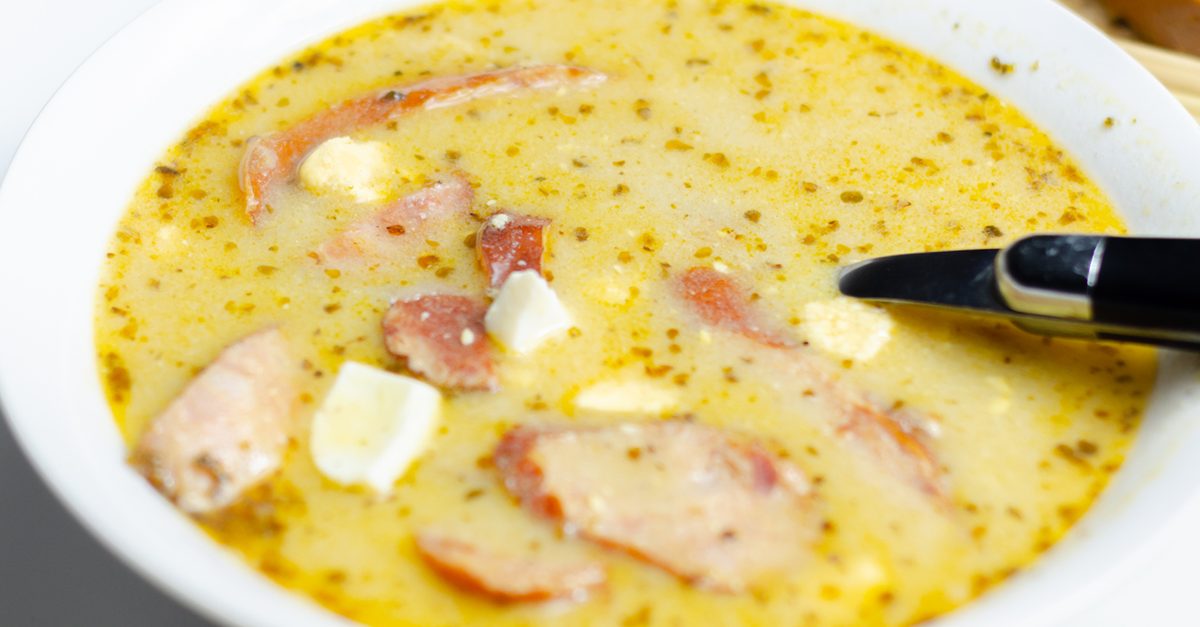The Top Baking Powder Substitutes
Baking powder is an essential ingredient for many baking recipes.
;Resize,width=742;)
While they may sound similar, baking powder and baking soda are, in fact, two different ingredients that behave differently when added to batter or dough. Baking powder is baking soda mixed with an acid. When it gets wet, it releases carbon dioxide which leavens dough and makes it rise. So how do you substitute baking powder in recipes? You'll need some baking soda and an acid. These are the best ways to substitute baking powder.
1) Buttermilk and Baking Soda

If you have a carton of buttermilk in your fridge and some baking soda in your pantry, you can easily make homemade baking powder. Buttermilk is naturally acidic. To use buttermilk and baking soda as a substitute for 1 teaspoon of baking powder, stir ¼ teaspoon of baking soda into your dry ingredients, then pour in ¼ cup of buttermilk into your wet ingredients. Don't forget – if you use this option, you'll need to cut the amount of overall liquid in the recipe, so if you're working with a highly liquidy batter, this may not be the best route.
2) Cream of Tartar and Baking Soda
Mixing cream of tartar with baking soda is possibly the best substitute out of all the options on this list. Cream of tartar is acidic, and mixing it with baking soda is an easy way to make homemade baking powder. Mix 2 teaspoons of cream of tartar with 1 teaspoon of baking soda to make 1 tablespoon of baking powder.
3) Sour Milk and Baking Soda

If you have some sour milk on hand, but the milk hasn't curdled, it means the milk has started to ferment. If you use sour milk and baking soda, make sure the milk hasn't gone off. Use ¼ teaspoon of baking soda and ¼ cup of sour milk ratio to make the equivalent of 1 teaspoon of baking powder.
4) Lemon Juice and Baking Soda
Thanks to its high acidity, lemon juice is a fantastic option for activating baking soda. To make 1 teaspoon of baking powder, use ¼ teaspoon of baking soda and ½ teaspoon of freshly squeezed lemon juice, combining them with the dry ingredients and wet ingredients, respectively. One thing to note – lemon juice has a noticeable flavor, so only use this combo if you don't mind having a lemony flavor in your baking.
5) Yogurt and Baking Soda

If you have plain yogurt on hand, you can combine it with baking soda in the same way and the same ratio as you would with buttermilk and baking soda. Greek yogurt is the best type of yogurt if you decide to use this method as a baking powder substitute.
6) Whipped Egg Whites
Sometimes you don't have baking powder or baking soda on hand. What can you use as a substitute? Whipped egg whites! They'll add a nice amount of volume to your recipes. Beat the whites of 1 to 2 eggs until soft peaks form, then fold them into your batter. It works best in pancake or waffle recipes.
7) Self-rising Flour

If you have self-rising flour, you don't need to worry about not having any baking powder in your pantry. Self-rising flour actually contains baking powder. Use it as a substitute for all-purpose flour, salt, and baking powder in whatever recipe you're making.
8) Club Soda
If you don't have any baking powder or baking soda at home, club soda will work in a pinch. It's made from water and baking soda. Substitute it for milk or water in your recipe. It's not the best option, but club soda works if you don't have anything else on this list.
9) Molasses and Baking Soda

Although it's not as acidic as some of the other options on this list, molasses does react with baking soda in a way that mimics baking powder and will help leaven your baked goods. Because molasses is sugar-based, you'll need to reduce the overall amount of sugar in your recipe. To make 1 teaspoon of baking powder, add ¼ cup of molasses to your wet ingredients and ¼ teaspoon of baking soda to your dry ingredients.
10) Vinegar and Baking Soda
Nearly everyone has a bottle of vinegar in their kitchen, so the vinegar and baking soda combo is an excellent option if you're fresh out of baking powder. Mix ½ teaspoon of vinegar with ¼ teaspoon of baking soda to make 1 teaspoon of baking powder. White vinegar is the most neutral-tasting option out of all the different types of vinegar out there, but apple cider vinegar will do the trick as well.
;Resize,width=767;)
;Resize,width=712;)
;Resize,width=712;)
;Resize,width=712;)
